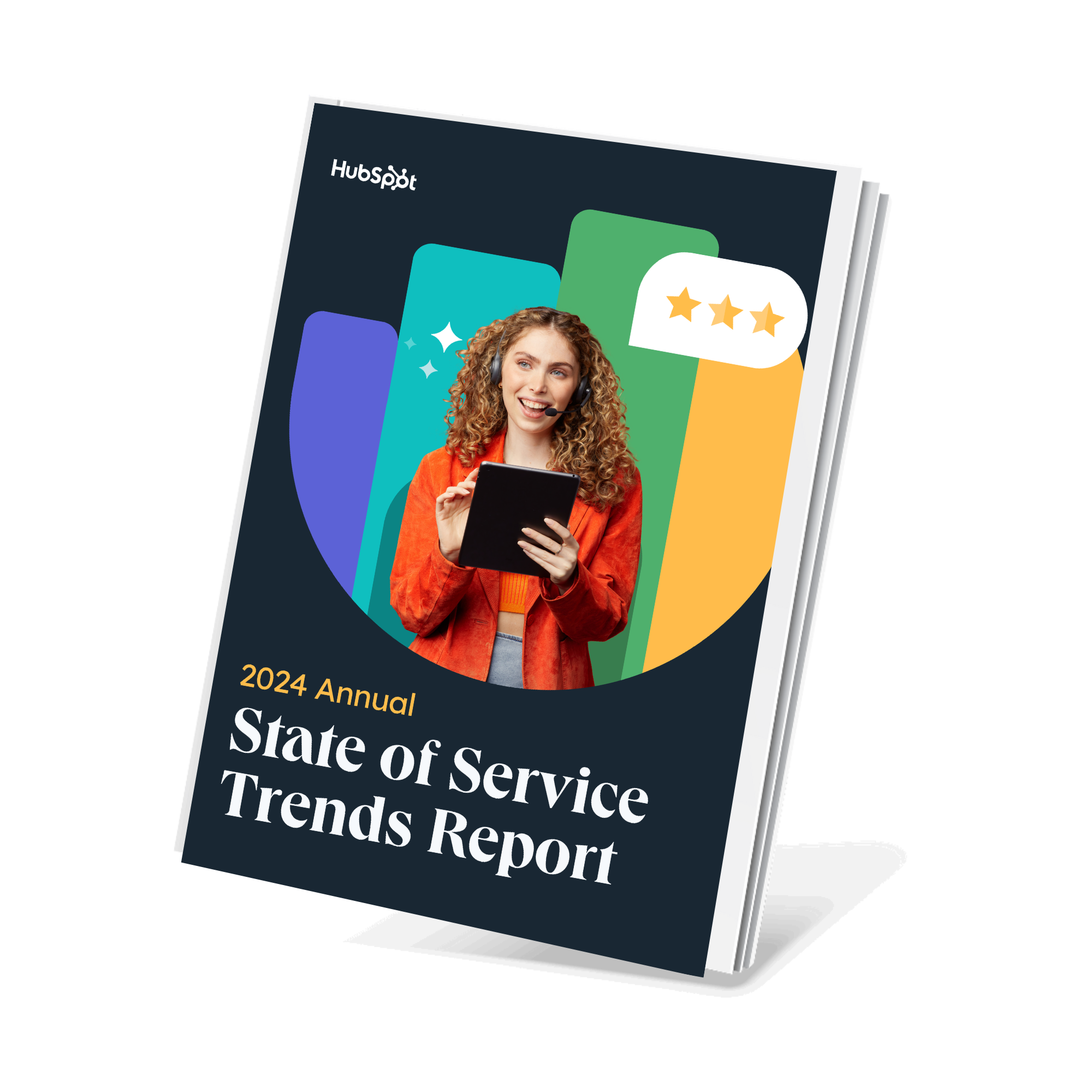Inbound customer service has evolved from a reactive cost center into a strategic growth engine that can transform buyers into lifetime advocates. In fact, the stakes have never been higher. With ticket volumes at record highs and customers setting tight resolution expectations, businesses can't afford to treat support as an afterthought.
This guide breaks down everything growth-driven service teams need to know about inbound customer service. That includes actionable strategies to transform support from a reactive function into a competitive advantage.
Table of Contents
- What is inbound customer service?
- The Landscape of Customer Service Today
- What is Loop customer service?
- Inbound vs. Outbound vs. Loop in Customer Service: Understanding the Difference
- Daily Responsibilities of an Inbound Customer Service Representative
- Essential Functions of Inbound Customer Service
- The Future of Inbound Customer Service
- Frequently Asked Questions About Inbound Customer Service
What is inbound customer service?
Inbound customer service is when a customer initiates contact with a business to ask a question, report an issue, or request an account change.
Examples:
- A SaaS user emails support after encountering a login error.
- A retail customer messages via chat to check their shipping status.
- A subscriber calls to modify their plan.
An inbound customer service representative handles these incoming inquiries, resolves issues, and manages tickets using tools like HubSpot Service Hub. Common channels facilitating service conversations include phone calls, live chat, email, and social media messages.
The benefits are boundless: effective inbound customer service leads to higher satisfaction, faster resolution, and stronger advocacy. And improving the customer experience by just 1% can significantly lift revenue, according to Forrester.
Inbound Customer Service Framework: Attract, Engage, Delight
HubSpot’s inbound methodology consists of three different stages of the flywheel: Attract, engage, and delight. While often applied to marketing, this same framework can be applied to post-purchase experiences, including customer service.

Attract
Brands attract customers through personalized content tailored by channel and self-service resources. A well-organized knowledge base, searchable FAQ pages, and educational content like how-to videos empower customers to find answers independently.
For example, the brand Easyship used HubSpot to automate self-service signups and saw a 60% increase in self-service onboarding.
Engage
When self-service isn’t enough, businesses must engage customers through responsive, multi-channel support. This includes answering customer service inbound calls, replying to emails, resolving live chat inquiries, and monitoring social media messages. Responsive customer service is much more effective with good tools and automated workflows.
For example, HubSpot Service Hub can route inbound calls, emails, and chats to the right agent using unified contact records.
Delight
Delighting customers means going above and beyond issue resolution to create memorable experiences. Teams collect feedback through CSAT and NPS surveys, act on insights to improve processes, and recognize loyal customers with personalized follow-ups. When brands delight customers, satisfied customers become advocates, leaving positive reviews, referring others, and strengthening their reputation.
Feedback loops also feed directly into product and marketing teams— making the product and customer experience stronger.
The Landscape of Customer Service Today
Customer service isn’t what it was a decade ago— the traditional inbound call center model isn’t enough. Ticket volume is at a record high, with higher customer expectations. Two-thirds of customers expect customer service to resolve their tickets within three hours. Customers want to contact brands on a variety of channels, and increasingly prefer self-service options.
This gap creates a competitive opportunity. Happy customers refer friends, leave positive reviews, and increase lifetime value. Businesses that invest in inbound customer service and Loop marketing can turn support into a growth engine.
To do this at scale, companies need service tools that automate intake, route tickets, and retain context across channels. AI tools, especially chatbots, enable faster response times, self-service empowerment, and better scaling without proportional increases in staffing costs. In fact, 75% of service leaders are already using AI.
What is Loop customer service?
Loop customer service applies HubSpot’s Loop Marketing framework (express, tailor, amplify, evolve) to post-purchase experiences. It treats every support interaction as an opportunity to learn, personalize, and improve future customer journeys.
For example:
- A customer submits a ticket about onboarding confusion.
- Service Hub logs the feedback and triggers a tailored email from Marketing Hub with a “Getting Started” guide and a follow-up from customer success.
- Service Hub analyzes trends in customer feedback, passing the highlights along to customer success and product teams.
- The company improves onboarding flows, and product usage goes up, closing the loop.
Loop customer service makes sure that insights from inbound service interactions directly fuel marketing, sales, and product.

Inbound vs. Outbound vs. Loop in Customer Service: Understanding the Difference
Inbound customer service resolves customer-initiated support requests, while outbound customer service proactively contacts customers for sales, onboarding, or renewals. Outbound is responsible for earning, onboarding, and upselling customers, while inbound is important for keeping them happy.
On the other hand, Loop customer service uses automation and connected service data to support customers throughout the entire customer lifecycle. It treats every service interaction as a source of insight that feeds back into marketing, product, and sales strategies. Loop customer service uses service insights to create a flywheel of tailored customer experiences that uplift the entire brand.
|
Feature |
Inbound Customer Service |
Outbound Customer Service |
Loop Customer Service |
|
Initiated by |
Customer |
Business |
Business (based on customer feedback) |
|
Primary goal |
Resolve issues, answer questions, support usage |
Generate sales, upsell and cross-sell, prevent churn |
Learn from interactions and improve future experiences |
|
Common channels |
Phone, email, live chat, social media, helpdesk |
Cold calls, email campaigns, SMS, surveys |
Integrated workflows across service, marketing, and product |
|
Example interaction |
Customer calls about a billing error |
Agent calls to offer a subscription renewal |
Support ticket triggers a tailored customer success email flow |
|
Key metrics |
CSAT, First Contact Resolution (FCR), Average Handle Time (AHT) |
Conversion rate, lead response time, call-to-close ratio |
Feedback loop velocity, customer journey improvement, retention lift |
|
Typical tools |
CRM, helpdesk software, knowledge base, live chat |
Dialers, email automation, lead scoring tools |
Unified CRM, marketing automation, analytics dashboards |
Daily Responsibilities of an Inbound Customer Service Representative
The key to providing exceptional customer service (and doing it well) is twofold: Brands need technology, and brands need amazing people. Inbound customer service representatives manage incoming customer communications across multiple channels. Their core responsibilities include:
Core Daily Tasks
- Handle 50–100+ inbound calls, emails, or chats per day
- Resolve product, billing, or technical issues
- Process orders, upgrades, and refunds
- Document interactions in a CRM
- Escalate complex cases to specialized teams
Essential Tools
- HubSpot Service Hub: Centralizes tickets, live chat, and call logs
- Knowledge base software: Enables self-service deflection
- CRM systems: Track customer history and preferences
- Call routing platforms: Ensure fast, accurate agent assignment.
Required Skills
- Active listening and empathy
- Clear verbal and written communication
- Product and policy knowledge
- Multitasking and time management
- Conflict de-escalation
The most exceptional customer service teams hire for character and values, then train for skill. It's much easier to teach someone how to use a software than it is to teach someone why it matters to focus on the customer first.
While the required tools and skills mentioned above are a definite bonus for getting started in the industry, soft skills such as empathy and de-escalation are the top core skills candidates should emphasize.
Essential Functions of Inbound Customer Service
Inbound customer service teams deliver four core functions. Smaller teams may handle multiple functions, while teams at larger companies may specialize in just one.
Help Desk Services
A help desk is the first line of support for common issues like password resets, navigation support, or feature questions. Inbound customer service agents often resolve common issues quickly or triage calls to specialized technical reps.
Pro tip: Consider deploying an AI agent to triage and resolve common queries. Research shows that AI agents can now resolve 40 to 60% of support tickets when integrated with a well-structured knowledge base. For example, HubSpot’s Breeze AI has easy, no-code setup for an AI help desk agent.
Technical Support
When customers need advanced support, technical support is the next line of defense. Technical service reps provide deep-dive troubleshooting for software bugs, integrations, or performance issues.
Pro tip: Log technical errors to identify bugs and improve products long-term. For example, technical reps can use Service Hub to log error details and track resolution paths.
Order and Payment Processing
Account teams handle upgrades, downgrades, cancellations, and billing disputes. Automations should manage PCI-compliant, error-free transactions with a human team for extra support.
Pro tip: Transparency and compliance when handling customer payments can make or break a customer’s trust. Look at this as an opportunity to extend a customer’s lifetime value.
Customer Retention and Satisfaction
Inbound customer service doesn’t always come in the form of a phone call or service ticket. At-risk customers may share their frustration through a survey response, low CSAT score, or usage drop. In these cases, customer retention or success teams can respond to identify the issue and make it right.
Pro tip: Reduce churn with proactive outreach and win-back workflows powered by Service Hub.
Inbound Customer Support vs. Service vs. Success: The Bigger Picture
While the inbound customer service rep’s primary role aligns with inbound customer support, their work enables broader strategic layers:
- Customer support reacts to immediate customer needs and queries.
- Customer service goes beyond a simple transaction to delight customers and guide them toward better outcomes (e.g., suggesting a better plan based on usage).
- Customer success follows a proactive plan to successfully onboard, support, and upsell high-value customers.
Solid customer support is the bottom of the pyramid that supports service and success. In practice, this means the inbound representative doesn’t just solve problems; they become a partner.
The Future of Inbound Customer Service
The future of inbound customer service is being reshaped by changing consumer preferences and AI. By 2029, Gartner predicts that agentic AI will resolve 80% of customer queries. This is a significant shift from past models, and an opportunity to rewrite customer service strategy for the better. Here’s what the future of customer service will look like in 2030.

1. AI-Powered Self-Service
Self-service is a key part of customer success because it lets customers get the help they need, in the way they want to get it. According to our recent State of Service data, 78%of service leaders say their customers aren’t afraid to DIY their way to a solution. Self-service options are available 24/7 with no wait time.
While many companies already provide a knowledge base or other static form of self-service, the winners will be those who go a step beyond. Offer customers chatbots, powerful portals, and other ways to find answers.
2. Predictive Support
The second major trend is predictive support, or anticipating customer needs before issues arise. Modern service platforms will use machine learning to analyze behavioral data, support history, and usage patterns to surface the “next best actions” for agents.
Of service leaders, 91% find that AI tools are effective at analyzing sentiments in customer service conversations. For example, a customer service team can use AI to predict when a customer is at risk of churning, then deploy prescribed remedies to keep them.
3. Personalized Customer Service
Inbound customer service isn’t known for its personal touch. Most interactions involve a recorded call menu or a customer service rep reading from a script. Customers may have to repeat their information and issue multiple times.
Personalized customer service promises to vastly improve the experience of contacting support. Unified data ecosystems streamline conversations across channels and provide context so customers can pick up right where they left off. AI systems can analyze customer purchase histories, preferences, and prior interactions to tailor recommendations so customers stay engaged and happy.
Frequently Asked Questions About Inbound Customer Service
What is the difference between inbound and outbound customer service?
Inbound customer service requires companies to respond to customer-initiated contact. Outbound customer service involves businesses proactively contacting customers for sales, renewals, or feedback.
What does an inbound customer service representative do daily?
An inbound customer service representative handles incoming calls, emails, and chats, resolves issues, processes orders, and documents interactions in a CRM like HubSpot Service Hub.
What skills are needed for inbound customer service?
Key inbound customer service skills include empathy, active listening, product knowledge, clear communication, and proficiency with CRM and ticketing tools.
How much do inbound customer service representatives make?
The average salary for inbound customer service reps in the U.S. is $50,173 per year or $17.97 per hour, according to Indeed. Top-paying industries include finance, utilities, and information technology.
What tools do inbound customer service teams use?
Common tools include HubSpot Service Hub, Zendesk, Freshdesk, LiveChat, and CRM systems. Unified tools like Service Hub streamline tickets, chat, calls, and feedback in one place.
How do you set up an inbound customer service operation?
First, define which support channels you’ll offer, then hire and train inbound customer service reps to handle incoming queries. Implement a CRM to store customer information and a ticketing solution to track issues and contacts. Enable self-service solutions by building a knowledge base and chatbot to triage inbound customer requests and offer personalized support.
How do you measure success in inbound customer service?
Key metrics for inbound customer service include CSAT (Customer Satisfaction), FCR (First Contact Resolution), AHT (Average Handle Time), and NPS (Net Promoter Score).
How to Grow With Inbound Customer Service
Inbound customer service is no longer just a transaction or a cost center. When you personalize your support, empower reps with unified tools, and use insights to power Loop marketing, inbound becomes a growth lever.
Editor's note: This post was originally published in February 2018 and has been updated for comprehensiveness.





![How to Implement a Hybrid Customer Service Strategy That Works [Expert Tips]](https://53.fs1.hubspotusercontent-na1.net/hubfs/53/hybrid%20customer%20service_featured.png)
![After Sales Service Strategy: What It Is & Why It's Important [+Examples]](https://53.fs1.hubspotusercontent-na1.net/hubfs/53/after-sales-service.jpg)

![6 Customer Service Recovery Strategies to Add to your Toolbox [+ Examples]](https://53.fs1.hubspotusercontent-na1.net/hubfs/53/service=recovery.jpg)